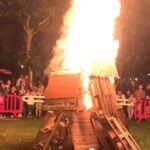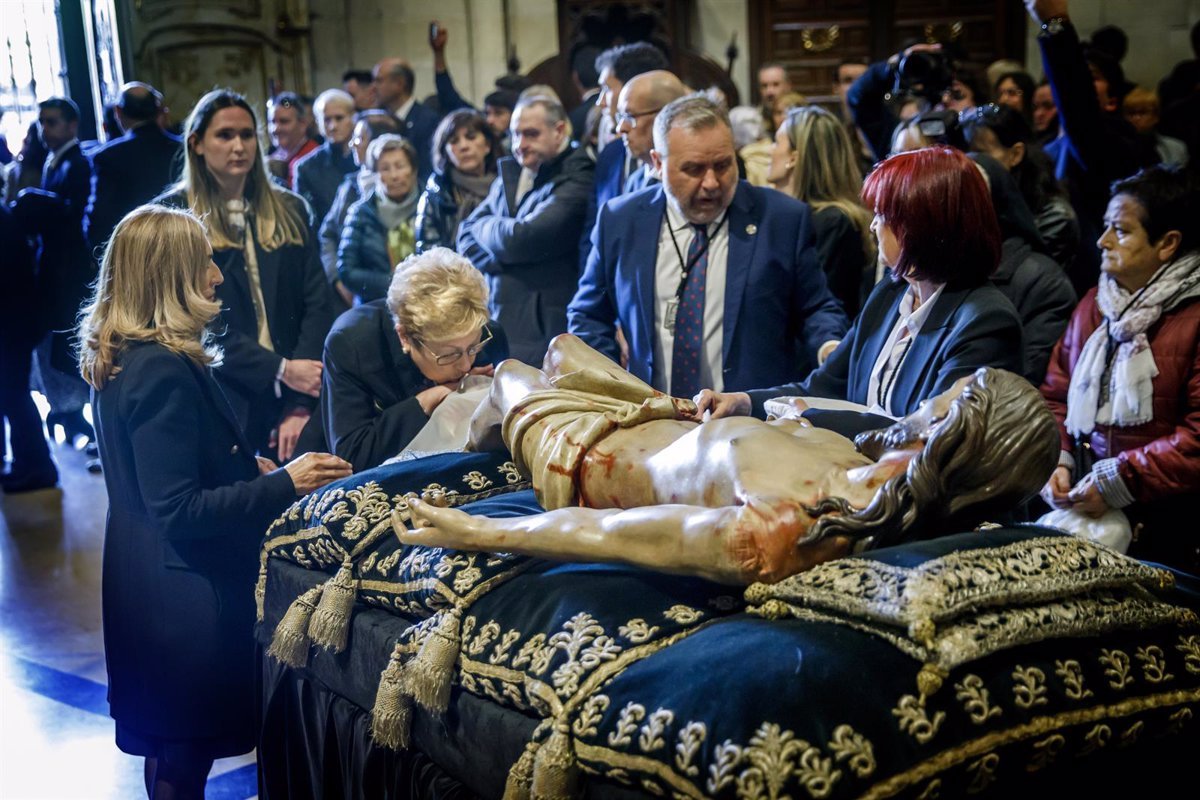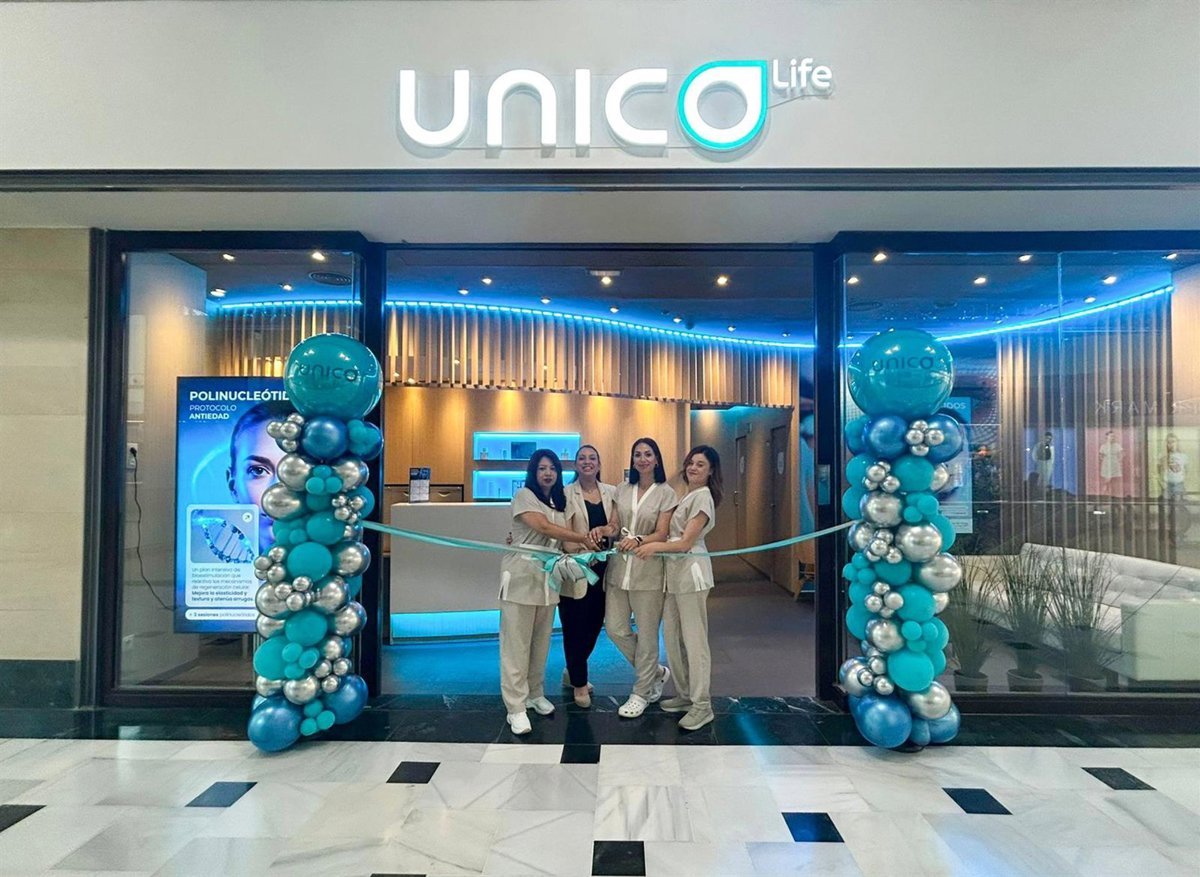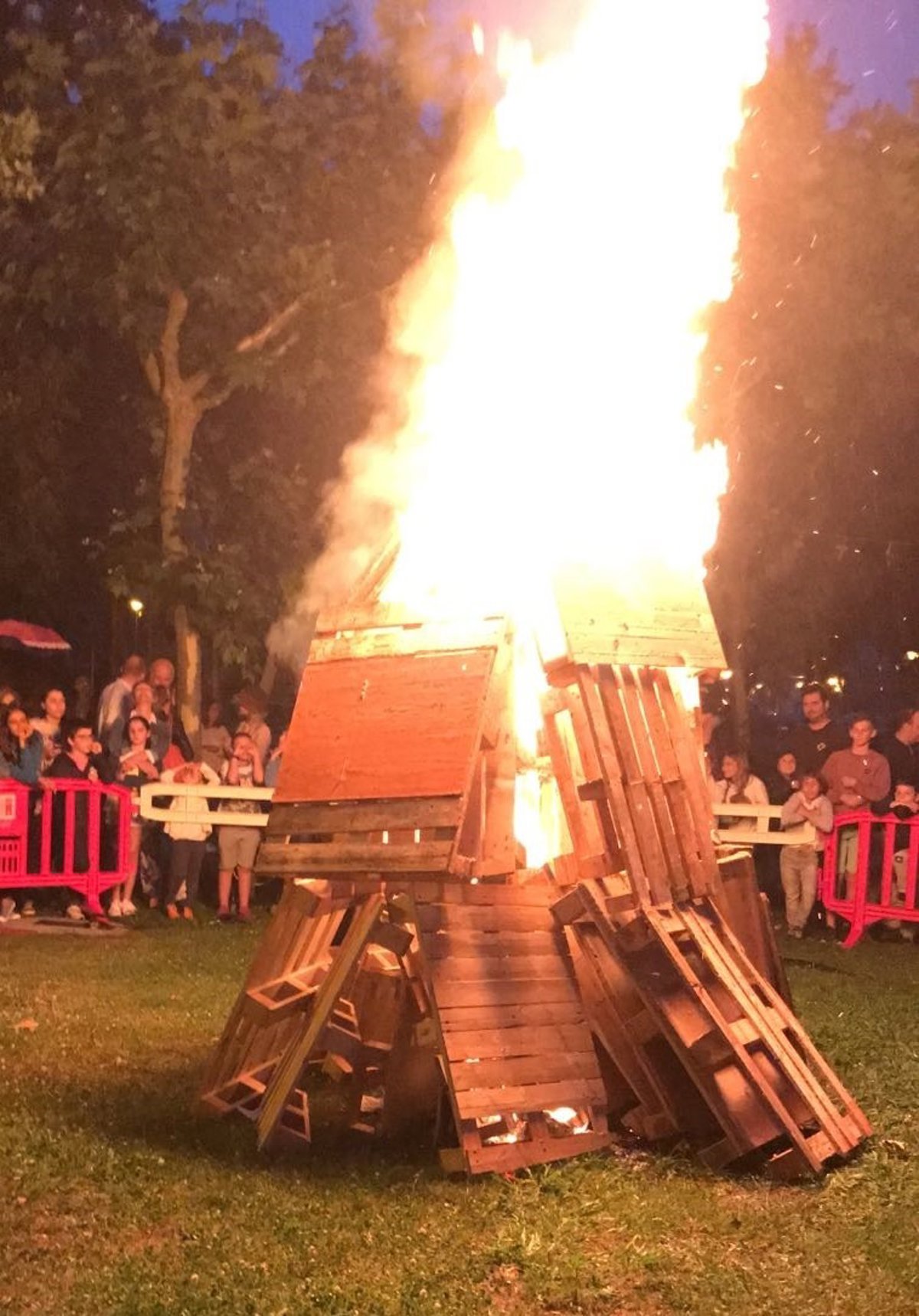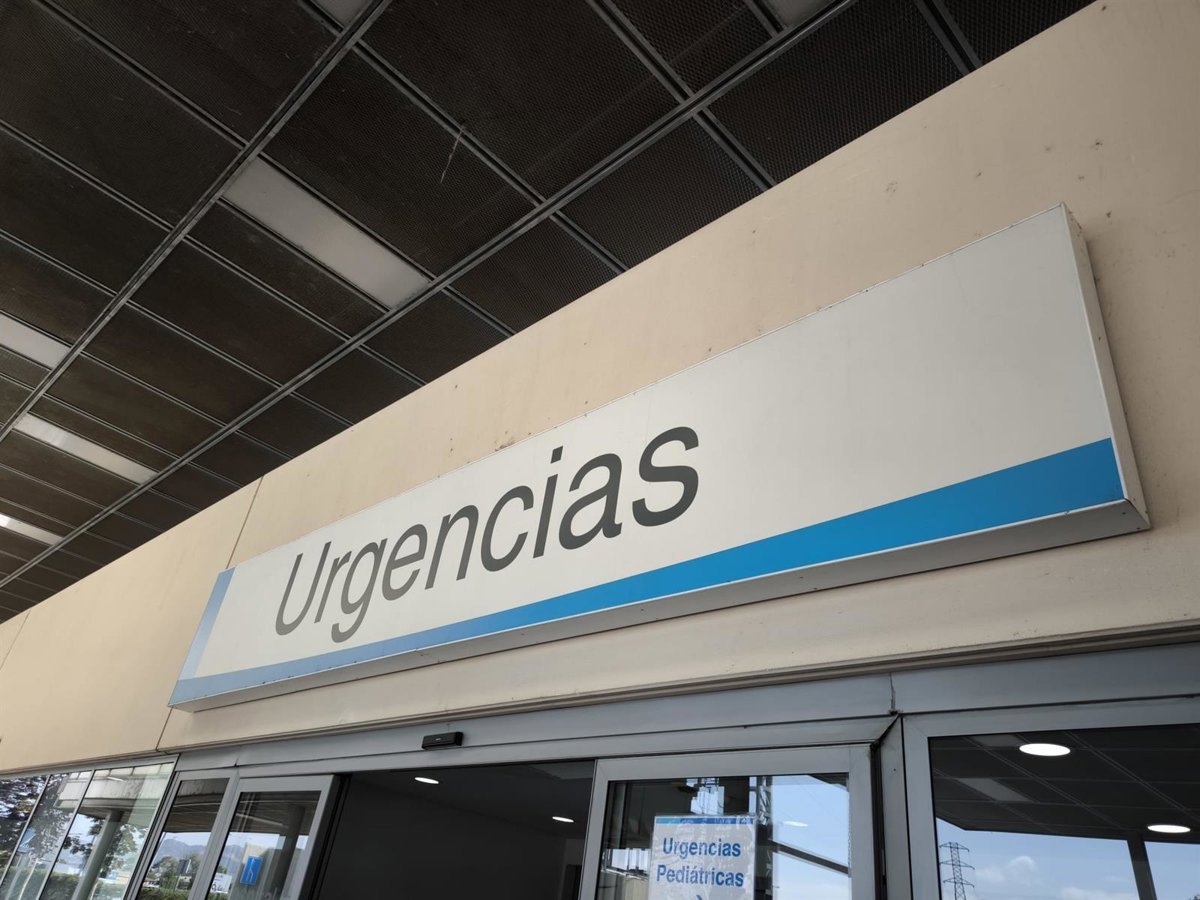Hundreds of residents of Logroño have gathered this Wednesday at the Co-Cathedral of Santa María de La Redonda in Logroño to fulfill the tradition of Cleaning and Veneration of the Christ of the Holy Sepulcher, which takes place from noon every Holy Wednesday.
Among those attending the event, which started at noon, were the President of the Riojan Government, Gonzalo Capellán, the President of the Riojan Parliament, Marta Fernández Cornago, the Mayor of Logroño, Conrado Escobar, councilors of the Logroño City Council, the Bishop of the Diocese of Calahorra and La Calzada-Logroño, Santos Montoya, the Prior of the Brotherhood of Fraternities of Logroño, Fermín Labarga, and the Elder Brother of the Brotherhood, Francisco Marín, among other personalities.
The Elder Brother of the Brotherhood of the Holy Sepulcher, David Rioja, highlighted to the media the significance of this event as «one of the most important in Logroño’s Holy Week», stating that «since I can remember, this day was dedicated to cleaning all the belongings of the Brotherhood, including the Christ, in an intimate and private ceremony, but over time more and more people wanted to attend, to the point of having to ‘distribute invitations to gain access’ to the more official ceremony.»
«It is one of the most revered images in Logroño,» he emphasized, adding, «we have seen everything brought to the statue, from babies, glasses, keychains, gloves, sweaters, anything you can think of, but what is most moving is to see the faces of people when they are in front of it.»
Rioja also praised the work of the female caretakers responsible for cleaning the Christ, noting that «traditionally they were women, but in recent years there have been male caretakers as well.»
One of the most emotional moments was experienced by the Sister Stewardess of the Brotherhood, Ana Idoya García, who described her role during the year as «organizing and preparing for this day; finding caretakers, preparing the cotton balls, ensuring there are items to sell, organizing the Christ’s bed, and then the most intimate part, opening the urn, taking out the Christ, handing it to the brothers who will move the Christ to the bed, and giving instructions to the caretakers.»
For the Sister Stewardess, opening the urn means «millions of emotions, joy, and a lot of hope.» «I always affectionately say it is my renewal of faith, so touching it, I don’t know, as they say, you don’t know the significance until you do it,» she added, mentioning that she has been performing this moment for over five years.
Finally, she recalled that «in the past, oils were applied, and eventually the Christ appeared a bit larger; it was taken for restoration, and we were told that oils were no longer necessary, nor was cleaning the dust, as it does not get in because it is inside the urn and a glass case, so symbolically a feather duster is passed over it.»
EMOTION IN THE EVENT
Minutes after noon, in a crowded Chapel of the Angels filled with emotional silence, the order was given to extract the Christ from the urn where it is kept throughout the year. Traditionally, it only comes out of the urn for this deeply rooted event in the customs of Holy Week in the capital of La Rioja.
After its careful extraction, the figure of the reclining Christ, carried this time by members of the Benés family, was placed on a small altar on black cushions embroidered in gold. Following a reading of the Gospel by the Bishop of La Rioja, the cleaning and ‘kissing of the feet’ of the figure were performed.
Subsequently, at 12:20 p.m., the doors of the Chapel were opened to the hundreds of residents of Logroño who had been waiting in line long before the event began to pass by the Christ, a figure donated to the city in 1694 by Captain Gabriel de Unsain, perpetual regidor of Logroño at the former collegiate temple of Santa María la Redonda.
From that moment, according to tradition, the citizens began to file past the Christ, in addition to kissing or touching the image, they usually pass various objects over the Christ, such as handkerchiefs, keys, and jewelry, and bring infants.
The event lasts about two hours, after which the figure of the reclining Christ is returned to its urn. With this, the image will conclude the procession of the Holy Burial of Logroño on Good Friday, as is tradition.



